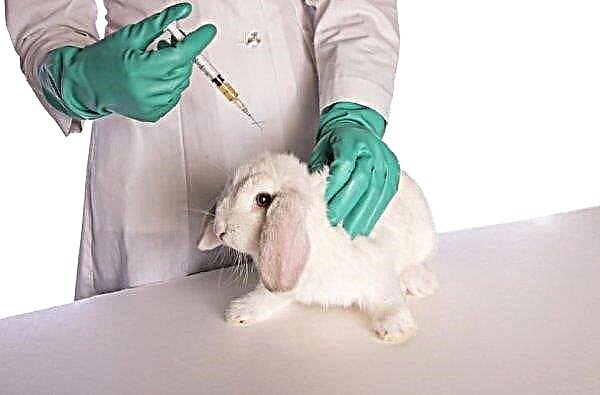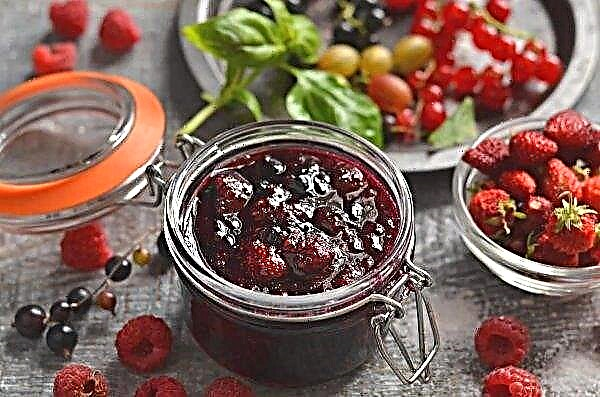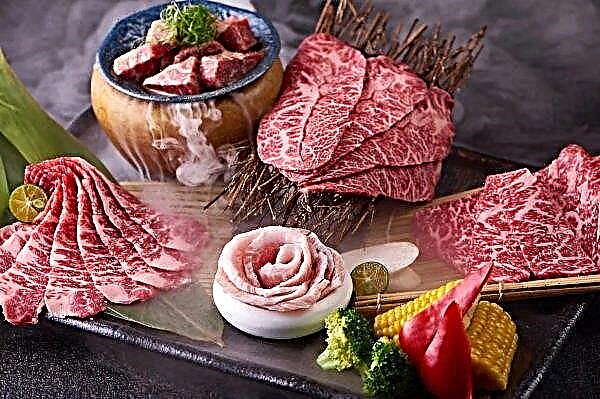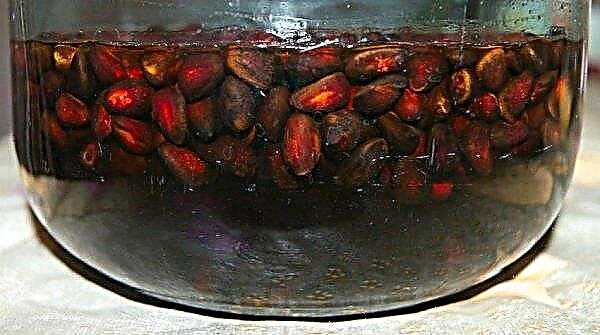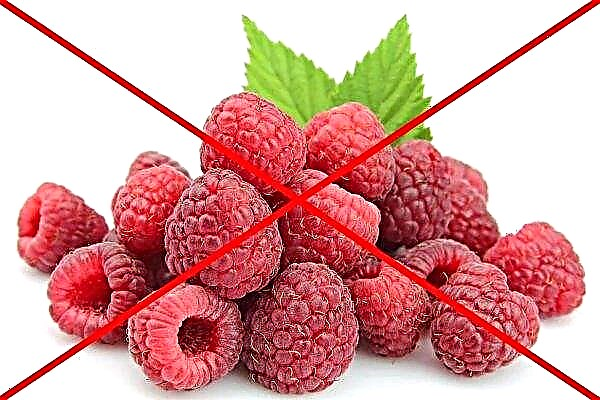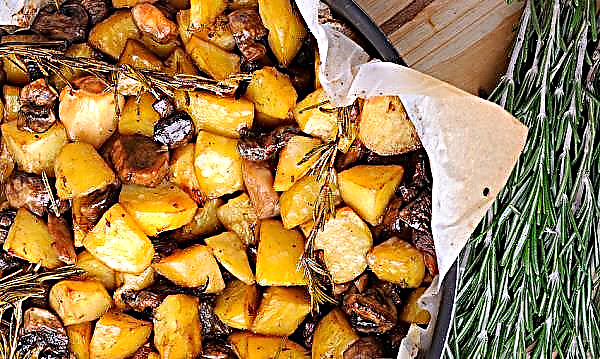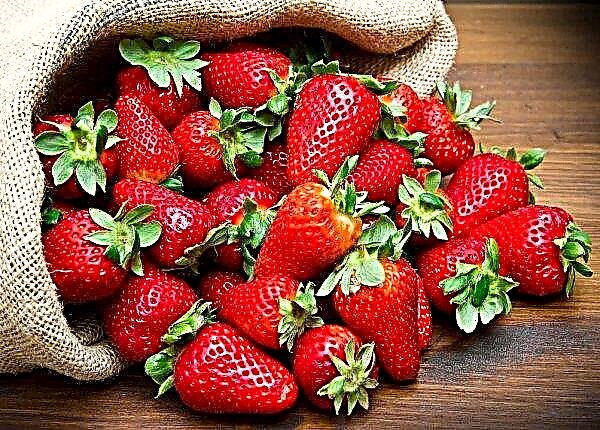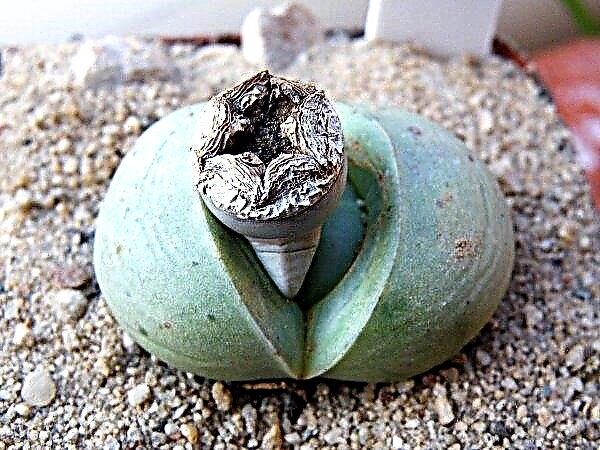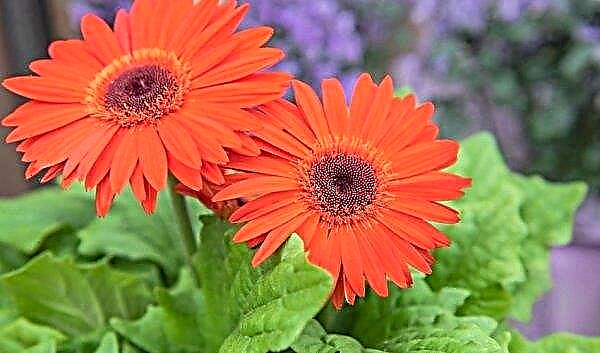Olendorfi (Picea abies Оhlendorffii) - a variety of common spruce, bred by breeder T. Olendorf in a hamburg nursery in the 40s of the XIX century. Seeds were brought from Nikitsky Botanical Garden, located in Yalta. In 1904, the German botanist F. L. Shpet, manager of one of the most famous family nurseries in the world, presented a description of the variety, named it by the name of the developer, and introduced it into the culture.
Grade description
Olendorfi is a dwarf plant, by the age of 30 it grows up to two meters, reaching a width of 1.2 m. The annual growth is 2-6 cm. Tree branches grow up in different directions and planes. 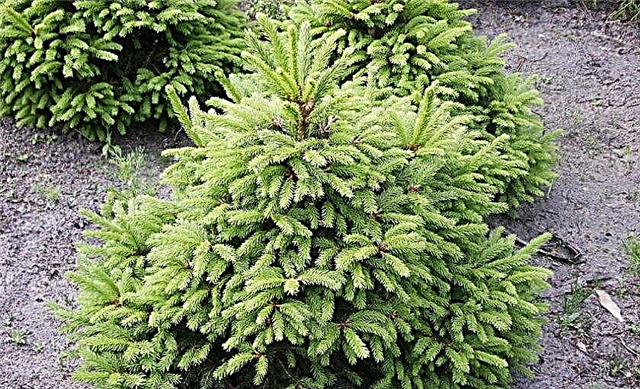 The needles are rather prickly, 5–8 mm long, round or rhomboid in cross section, dense and rather stiff. On young trees and the strongest shoots - radial needles, in the upper part of the tree - semi-radial. Color - from olive to golden green. Young shoots of a shade of coffee with milk or yellowish, the lower ones are usually lighter than the upper ones. Buds of brown or ocher color, spindle-shaped, those that grow on the tops reach a length of 3 mm, the rest are smaller.
The needles are rather prickly, 5–8 mm long, round or rhomboid in cross section, dense and rather stiff. On young trees and the strongest shoots - radial needles, in the upper part of the tree - semi-radial. Color - from olive to golden green. Young shoots of a shade of coffee with milk or yellowish, the lower ones are usually lighter than the upper ones. Buds of brown or ocher color, spindle-shaped, those that grow on the tops reach a length of 3 mm, the rest are smaller.
Sometimes 4-6 pieces are grouped, on powerful shoots 8-10 pieces can grow together. Cones of a tree of a beautiful purple color, ripening, acquire a chocolate shade. It tolerates frosts up to -40 ° C. Life expectancy is from 300 to 500 years.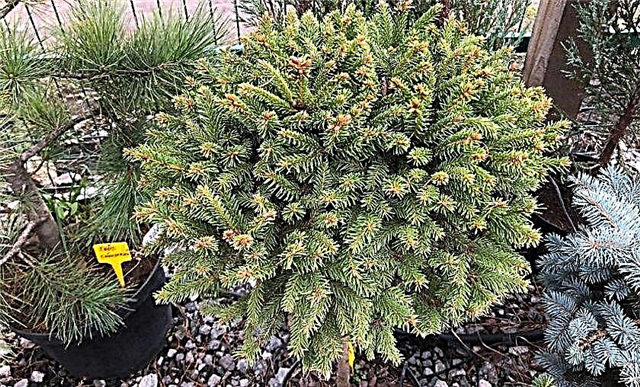 In youth, the shape of the crown is rounded, quite lush, with age it becomes conical, spreading, with several tops.
In youth, the shape of the crown is rounded, quite lush, with age it becomes conical, spreading, with several tops.
Landscape design application
As a decorative element, it can be used in a variety of ways: compact dimensions allow you to plant a tree in the ground or in pots. It looks great as a separate plant and in group plantings. Due to its growth, Olendorfy can act as the environment of larger conifers and at the same time be the central figure of the composition framed by even smaller firs or firs.
It can be involved in the design of alpine hills, rockeries, Japanese and heather gardens of small size, as a retaining wall. The relatively large size, as for dwarf spruce, allows you to put tubs with a plant on a flat roof and bring it into the house for the winter, decorate it for the New Year holidays.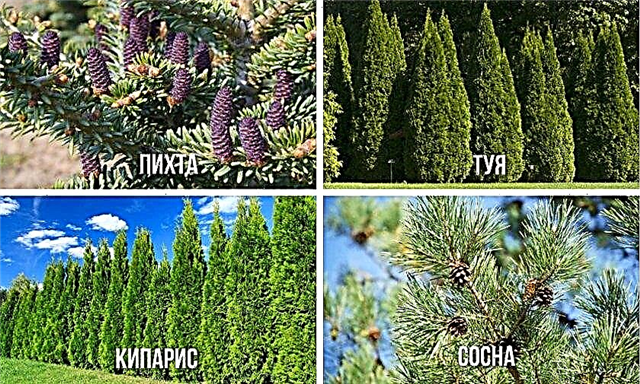
It goes well with any conifers, higher or lower growth: with fir, thuja, cypress, pine, other spruce. It looks good among gray pebbles and as a hedge.
The variety is perfect for cultivation in areas with a slope:
- in such places excess moisture does not stagnate in the roots;
- in addition, the hedge of Olendorfy can smooth out, even out the garden's tilt line.
Since the tops of the trees are at eye level, they are a kind of landmark, a visual marker that the eye falls on. Planted properly, with correctly performed forming pruning, plants can positively change the perception of bumps, slopes or tiers of the site.
Landing
Olendorfy can be propagated, like all conifers, in a generative and vegetative way (cuttings and layering). But when propagated by seeds, it will take you several years, and the results are not always encouraging: the plant may not inherit the parental traits. The same can be said about layering - often a young tree does not differ in beauty, which is unacceptable in principle for a decorative plant.
Planting cuttings and a young plant from the nursery is largely similar. It can be said that this is the same event, only the first 2–3 years will be looked after not by you, but by professionals.

Seat and Seedling Selection
The plant is absolutely undemanding to the type of substrate. Suitable soil with a moderate nutrient content - from slightly acidic to calcium-rich alkaline. But the tree does not like dry or saline soil, and also does not tolerate stagnation of moisture in the roots. It responds well to a large amount of sunlight, but tolerates light shade quite normally.
Important! You should remember the surface location of the root system and take this circumstance into account when choosing a place. It should be closed from the winds, as young roots under the influence of the wind may not hold the spruce in the ground.
Based on this description, you should choose a place for planting a Christmas tree. The site may be in a slight shadow, but not in a lowland, as already mentioned, stagnation of water in the roots is extremely undesirable.
For planting, it is best to purchase a potted plant in the nearest nursery. The advantage of such seedlings is that their root system is sufficiently moistened, and the substrate is fed with a prolonged action, which makes it possible not to feed the plant in the first 2 years of life in a new place.
The presence of signs of dryness on either the roots or needles is unacceptable. The condition of the measles system can be assessed by visual inspection if you get a seedling without a pot. When buying a seedling in a tub, just inspect the soil: it should not be overdried or have traces of salinity. The needles of the plant should look healthy and shiny. Try the needles with your fingers: it should not break easily (a clear sign of moisture deficiency) or come off the branch.Did you know? From the root system of the remnants of the tree, spruce can form clone shoots. In the Swedish reserve Fulufjället, the spruce "Old Tjikko" grows, whose age, counting previous generations, is more than 9.5 thousand years, which makes it the oldest plant on the planet.

Landing process
The planting procedure of Olendorfi is almost the same as for other conifers. Perform it as follows:
- At the chosen location, digging pits (depth - 0.6–0.7 m, width - 1 m) should be excavated no later than 2 weeks before the planned procedure. The distance between neighboring plants is 2.5 m. If you plan to make a hedge, reduce the distance to 1.8–2 m.
- Pour a 20 cm thick drainage layer into the pit. Expanded clay, broken brick, river sand, or a mixture of these can be used as this element.
- In the meantime, you need to prepare the substrate. To do this, mix 2 parts of turf and leaf soil, 1 part of peat and sand. If you are planting a tree without a pot, add 2 tbsp to the substrate. l ammonium nitrate and the same amount of superphosphate per 1 bucket of substrate.
- Lay a layer of soil mixture of such thickness on the drainage that, after the seedling is placed in the pit, its root neck is flush with the ground.
- Carefully transfer the seedling from the pot to the pit, level it and fill it with the prepared substrate, periodically tamping it.
- After planting, abundantly pour the tree with warm water (3-4 buckets per spruce). If a planted plant without a pot, it can be fed, add 6–7 tbsp. To water. nitroammophoski and 10 g of Kornevin. Spruce in the tub usually does not need fertilizer in the first 2 years of life.
- Mulch the area around the tree in a radius of 60–80 cm. Pine sawdust and peat are used as mulch, and a thin layer of coniferous bark is covered with top.

Care
Olendorfi is quite moderate in its requirements and needs only the most necessary procedures.
Watering
Spruce should be irrigated regularly, but moderately enough. The average norm is about 1.5–2 buckets of water per week for each plant. During periods of drought, watered daily, one bucket. In addition, you need to irrigate the crown of the plant.
After watering, it is necessary to loosen the soil. Since the root system is located superficially, this should be done to a depth of not more than 5-6 cm. Loosening the plant is necessary for root respiration, otherwise the earth is covered with a crust that interferes with normal aeration. If only peat is used as mulch, it is not removed, but mixed with soil during the procedure.
 Together with loosening, weed removal is also performed, although when the trunk area is mulched, their growth is suppressed. In the first season weed can simply be plucked.
Together with loosening, weed removal is also performed, although when the trunk area is mulched, their growth is suppressed. In the first season weed can simply be plucked.
Top dressing
Plants from the pot, as well as those during the planting of which fertilizers were applied, do not feed the first season.
Important! Softwood does not require nitrogen to the same extent as hardwood, since the needles do not crumble, and therefore, the plant does not need to build up green mass. It is generally not recommended to introduce this mineral later than the beginning of July, since young shoots that have begun to grow actively may not have time to get stronger before the onset of frost and die.
In the future, I apply fertilizers according to the following scheme:
- In early spring, before the start of active sap flow, 1.5–2 tbsp. nitroammophoski under each plant. You can dry method with shallow digging or with watering, dissolving in a bucket of water. Every two years during the same period, instead of mineral nitrogen fertilizers, rotted manure or a solution of poultry litter is introduced.
- From April to July, universal dressings ("Aquarin", "MicroMix", "Kemira Universal") are introduced according to the instructions. Use these funds on average twice a week.
- Nitrate fertilizers of nitrate form (potassium or calcium nitrate) are applied in small quantities only until July. Then, active feeding with potassium and magnesium begins, a little less - with phosphorus. Magnesium is essential to the plant for the normal state of needles.
- In August - September, magnesia is applied once (1 tbsp. Per spruce) or the same amount of potassium nitrate.
- In order for the needles to be beautiful and strong, in July they add magnesium sulfate (1 tbsp. L / 1 m).
 1 - in the early spring; 2- from April to July; 3- until July; 4- in July
1 - in the early spring; 2- from April to July; 3- until July; 4- in JulyPruning
Forming pruning is performed for the first time shortly after landing at a new location. In the future, this procedure is carried out until mid-summer, so that the places of cuts that need to be covered with garden varnish have time to overgrow.
With regular and correctly held forming scraps from Olendorfi, an almost impenetrable hedge can be grown. If two tops grow on a tree, one of them should be removed. Sanitary pruning is performed at any time of the year. In early spring, the spruce is carefully inspected, frostbitten, diseased or dry branches are removed. Sections are treated with fungicides (Bordeaux fluid) and garden var.
Sanitary pruning is performed at any time of the year. In early spring, the spruce is carefully inspected, frostbitten, diseased or dry branches are removed. Sections are treated with fungicides (Bordeaux fluid) and garden var.
Diseases and Pests
The variety has good immunity, is resistant to most diseases and pests. However, fungal diseases can be dangerous due to excessive moisture, stagnation of water in the roots, as well as too dense plantings.
Of the diseases, the following should be distinguished:
- shute;
- Fusarium
- root rot;
- rust;
- necrosis of the cortex;
- ulcerative cancer.

For the treatment of diseases identified in the early stages, drugs such as Bordeaux liquid, “Khom”, “Fundazol”, “Abiga-Peak”, “Fitosporin-M”, “Alirin-B” and others are used according to the instructions. Fungal diseases in advanced form are most often not subject to treatment. The tree affected by them must be uprooted and burned away from the garden. Treat all nearby plants and the ground around with fungicides.
The greatest danger among pests is:
- leaflet;
- spider mite;
- aphid Sith spruce.
 Against insects use "Karbofos" and "Decis", as described in the description. Most often, the plant is treated with insecticides twice, in late June - early July with a difference of two weeks.
Against insects use "Karbofos" and "Decis", as described in the description. Most often, the plant is treated with insecticides twice, in late June - early July with a difference of two weeks.
Winter preparations
Olendorfi tolerates frosts down to -40 ° C quite normally, which means that he can winter without shelter in most of the territory of Russia. However, young plants are better insulated. After abundant watering, a thick layer (8-10 cm) of fresh mulch is laid in the winter, and sprinkled with pine bark on top of which pine pine grass is laid.
Spruces of this variety are prone to sunburn in late February or early spring. To avoid this, before the onset of spring, cover the tree with a non-woven fabric such as spunbond.Did you know? In the wild, forest fires can help conifers multiply - cones explode from high temperature, and seeds fly apart up to 40 meters away. At the same time, along with smoldering fruits, fire spreads through the forest.

Olendorfi is a beautiful tree, absolutely unpretentious in care and well tolerates frosts. Despite the dwarf form, it grows to quite decent sizes, while remaining compact. The appearance of the tree allows you to use it in landscape design in any quality.


